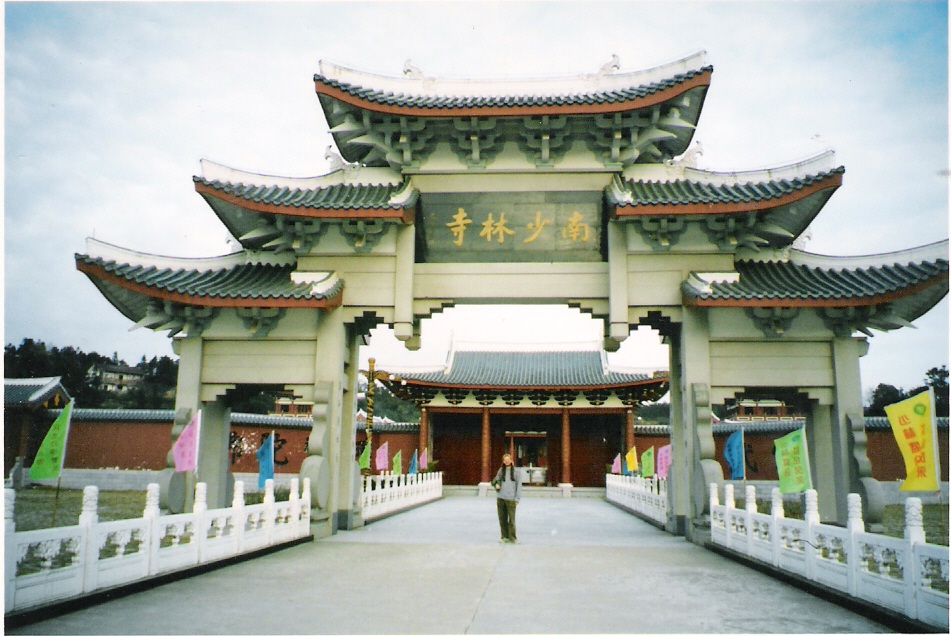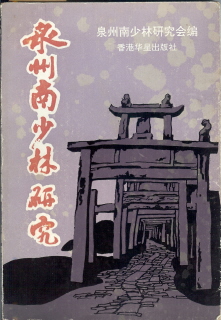
Bruce Lee's character, in the movie "Enter the Dragon" (龍爭虎鬥), before the final fight against the nefarious Mr. Han (played by Shek Kin 石堅), admonishes the villainous Han, saying, "You have offended my family, and you have offended the Shaolin Temple." This, along with the T.V. show "Kung Fu", were probably my first introductions to the legends surrounding the Shaolin Temple.
The Shaolin Temple in Henan is considered the birth place of Chan (Zen) Buddhism, associated with the Indian monk Bodhidharma and his disciple Huike, as well as the birth place of Kung Fu, conjuring up images of staff-wielding martial monks.
However, as a kid growing up in the seventies, the plots of my favorite martial arts movies concerning the Shaolin Temple were productions of either the Shaw Brothers 邵氏 or Golden Harvest 嘉禾 studios in Hong Kong, and were actually not about the famous Shaolin Temple in Henan.
Instead, the plots of these movies revolved around the legends of the burning of a Southern Shaolin Temple by the Manchus and the subsequent schools of martial arts founded by the few survivors from the temple.
 |
| The Southern Shaolin Temple at Putian, Fujian Province. Photo taken in 2002. |
 |
| A 1993 Mainland book entitled Research into the Quanzhou Southern Shaolin, which tries to bolster Quanhou's claims to the ownership of the Southern Shaolin Temple while also attempting to disprove Putian's claims to the temple. |
Barend ter Haar, commenting on a tradition of Southern Shaolin martial arts that existed in Fujian from at least late Ming times, said, "This much can be accepted from the studies in Quanzhou nanshaolin (1993), even if they are rather parochial in their approach" (1998, n. 70, p. 404). Chinese scholars searching for the Southern Shaolin have proposed various locales for the temple, but Ter Haar critiques their work stating, "Their argumentation is often weak and teleological" (ibid, p. 404). To Sum up, Barend ter Haar states, "At the present stage of our knowledge, it seems likely a local tradition existed of the burning of a Shaolin Monastery somewhere in southern China, maybe to provide an explanation for the spread of the martial arts tradition of this name. Sadly we cannot confirm this as an historical event, but whether as a folkloric tradition or historical event, the account was then incorporated into the Triad foundation story." (p. 407)
Interestingly, the oldest accounts of the burning of the Shaolin Temple in the sources, place the Shaolin Temple in Gansu province, for example see the Yao Dagao 姚大羔 manual from 1810.
Around the year 2000, I first began collecting the various accounts together, hoping to do a study on them. I was fascinated by the discrepancies in the sources (especially the idea of the five ancestors), and I was most interested in the development of the legend over time. Since that time, I started studying Classical Chinese, and I have become interested in the development and later reworking of more ancient Chinese legends concerning the Spring and Autumn period. Anyway, I am hoping that my putting the sources on this website together in one database will provide a tool for further study into this entertaining legend, which grows over time, changing from place to place, and ultimately seems to have no historical basis.
There are two different traditions surrounding the burning of the Southern Shaolin Temple, both of which are first recorded in their entirety in the 19th century. As is usual for most myths, the earliest versions are the least detailed and the shortest.
The first is the tradition recorded in the foundation accounts of the secret society called the Tiandihui 天地會 (Heaven and Earth Society), also known as the Triads. The earliest complete version coming from a society handbook confiscated by the Manchu authorities in 1810, although there are earlier incomplete references to aspects of the legend in writings from the late 18th century. In this tradition, the five ancestors are usually (but not always) named as Cai Dezhong 蔡德忠 , Fang Dahong 方大洪, Ma Chaoxing 馬超興, Hu Dedi 胡德帝, and Li Shikai 李式開. According to Barend ter Haar there are two different traditions (of the Tiandihui foundation account) which he calls the A and B versions (1998, p. 379).
The second is a tradition, that is current among the legends of various schools of southern style martial arts from Guangdong 廣東 (Canton), which apparently first appeared in the Qing Dynasty martial arts novel, called Wan nian Qing qi cai xin zhuan 萬年青奇才新傳 (This book is also called Sheng chao ding sheng wan nian Qing 聖朝鼎盛萬年清 being translated as Evergreen ; or Qian Long xun xing Jiang nan ji 乾隆巡幸江南記 or simply Qian Long you Jiang nan 乾隆遊江南, or Qian Long xia Jiang nan 乾隆下江南, being translated as "The Emperor Qian Long travels south of the Yangtze"). The book, which tells the story of the famous rivalry between the Wudang 武當 and Shaolin schools, was published anonymously in 1893, and is apparently the primary source of many of these Hong Kong Shaolin movies of the seventies. The five ancestors (a concept not yet found in the Wan nian Qing ) are usually given as Zhi Shan 至善禪師, Wu Mei 五梅大師, Bai Mei 白眉道人, Feng Daode 馮道德, and Miao Xian 苗顯.
The Database of Sources on the Burning of the Southern Shaolin Temple
ter Haar, Barend J. Ritual & Mythology of the Chinese Triads: Creating an Identity. Leiden: E.J. Brill, 1998.